2024 Ford Mustang First Drive Review: You want silly? It gives you silly

ARCADIA, Calif. – “All-new” was thrown around a lot during the press launch of the 2024 Ford Mustang, but that’s stretching the definition of the word “all.” The 2024 Mustang is based on the previous generation’s platform, many dimensions are effectively the same, and the available engines are derived from their predecessors. It seems more like the 1971 Mustang, which changed considerably, yet retained the original Falcon-derived platform and is considered a first-generation Mustang. Similar intra-generational transformations occurred for 1987 and 2010.
Frankly, this is just a matter of semantics, marketing and the economic realities of re-engineering internal combustion cars in an SUV-hungry market and at the dawn of the EV era. What’s important is that this is a new Mustang, one with fundamental differences, improvements and additions that set it apart from its predecessor. The greatest addition is the wildly fun drift brake, which we’ve devoted an entire separate piece to, while the biggest differences and improvements are found inside. As this is a Mustang review, let’s save those for later and instead pop the hood.
The 2024 Mustang GT gets a revised version of Ford’s 5.0-liter “Coyote” V8. The key upgrades are a dual throttle body induction system and a dual intake that sucks in air through the distinctive openings stuck into both sides of the grille. That’s why the fang-like elements are there and why the EcoBoost doesn’t have them. The GT now produces 480 horsepower and 415 pound-feet of torque in standard guise, up from 450 hp and 410 lb-ft. Opting for the active valve exhaust bumps it up to 486 hp and 418 lb-ft, while the new Mustang Dark Horse that we did not drive churns out 500 hp and 418 lb-ft.
Note that our GT driving impressions will be coming tomorrow morning due to Ford having a separate reporting embargo for the EcoBoost and GT.

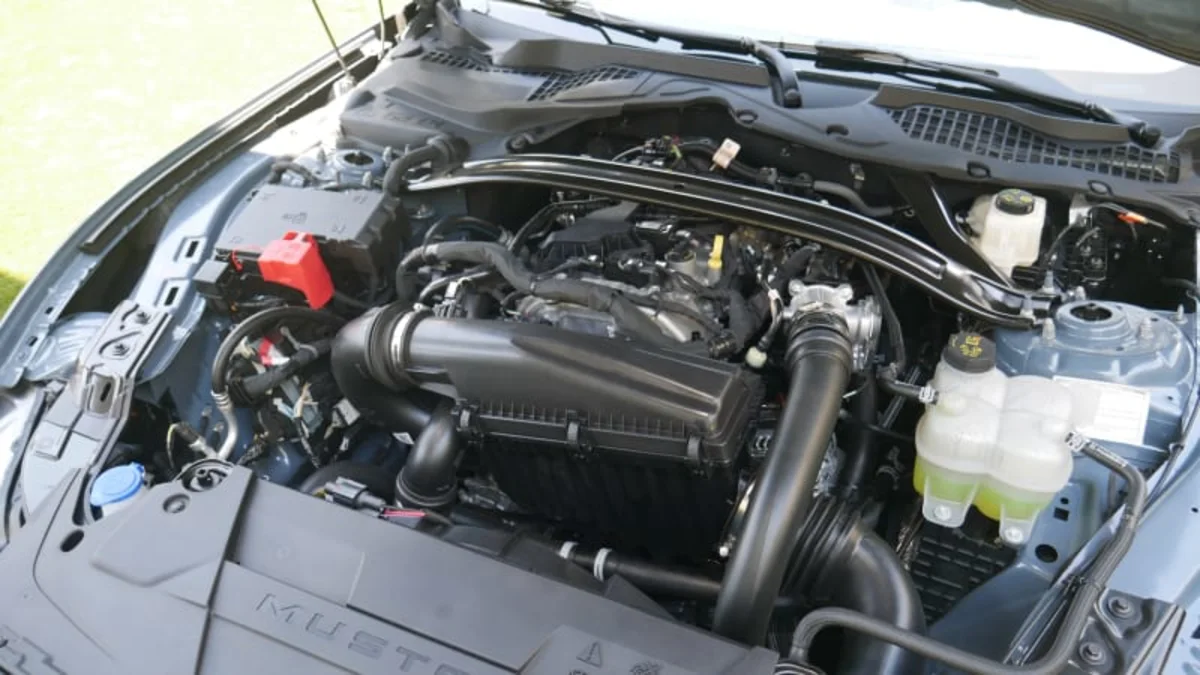
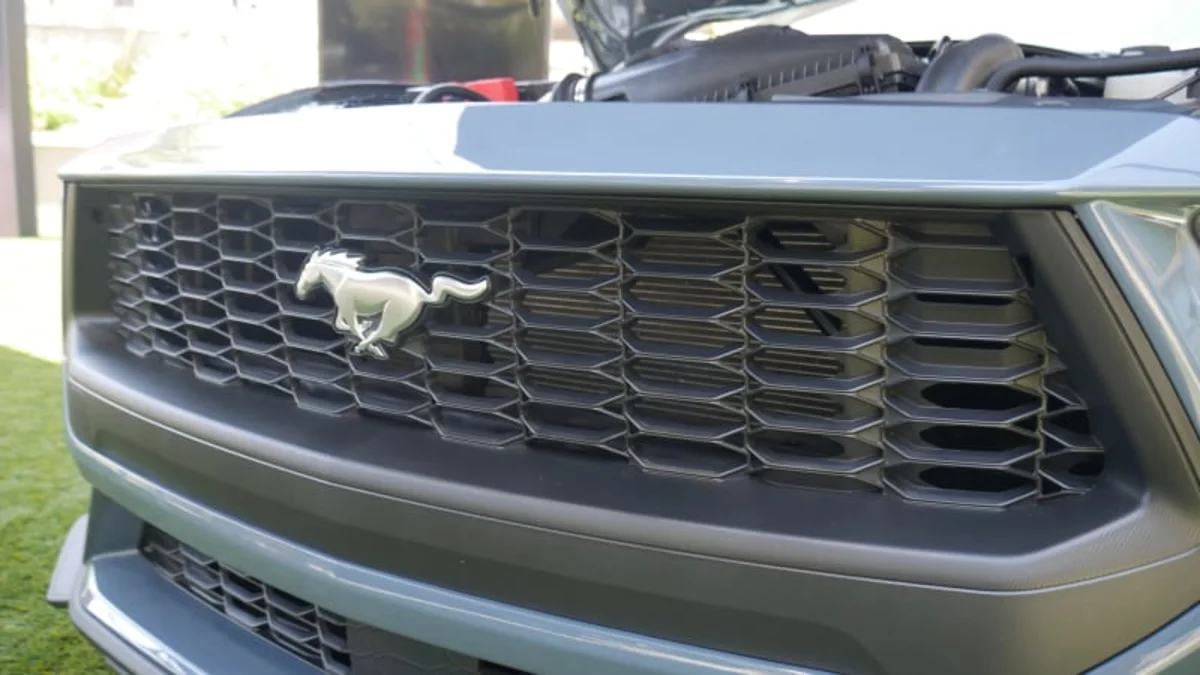
The base 2.3-liter EcoBoost four-cylinder gets a new twin-scroll turbocharger, a new modular power cylinder architecture and port injection added to work alongside the existing direct injection. The result is 315 horsepower – a 5-hp increase over the previous standard EcoBoost but 15 less than the discontinued “High Performance” variant. It produces the same 350 pound-feet of torque as both.
Don’t let those figures wash over you. The 4.6-liter V8 of the 2005 Mustang GT, the first of the retro models, produced only 300 hp and 320 lb-ft of torque. Thanks to the wonders of modernity and turbocharging, you can now do better than that with half the cylinders. This is absolutely a performance engine, one that energetically gets the Mustang up to speed and gets the tires smoking, especially with the drift brake. A four-cylinder Mustang can still be a fun and fast Mustang.
Does it sound as good? Oh heck no. There remains a cognitive dissonance of hot hatch engine noises in a Mustang, but the available active valve performance exhaust does its best to wash that out with a deep, omnipresent bass that increases when you select Sport or Track modes. It honestly sounds better outside the car, which could be a reason to ponder the convertible or use the new Remote Rev function that lets you rev the engine using the key fob. You want silly? The 2024 Mustang will give you silly.
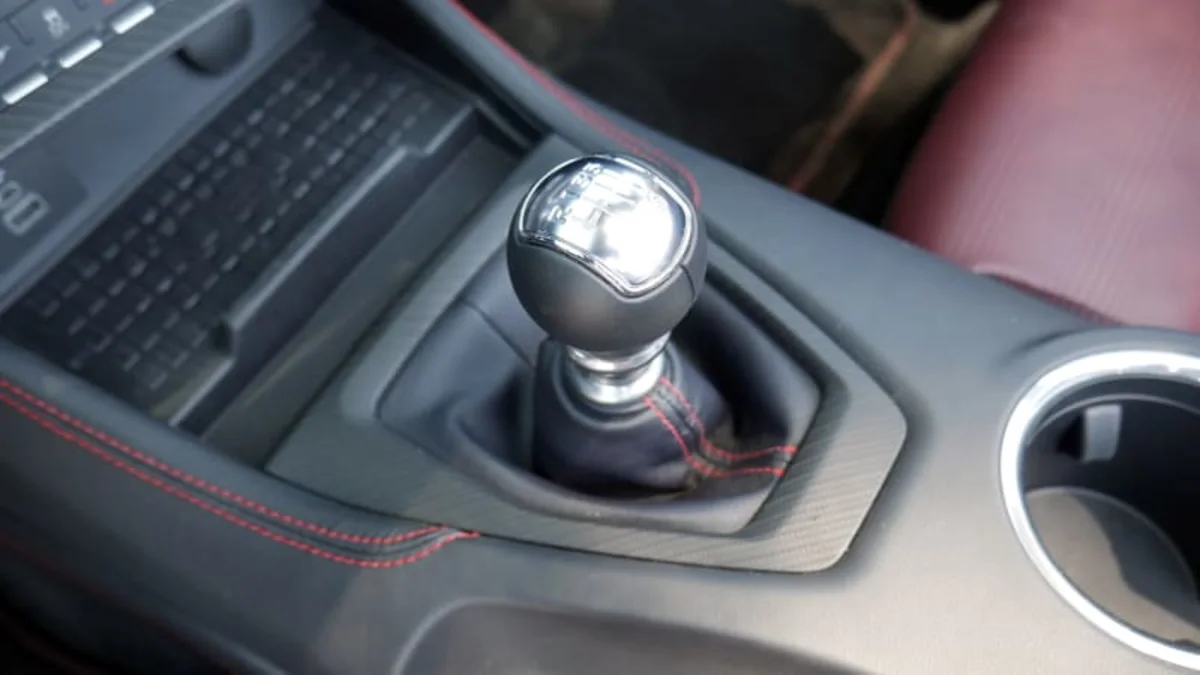
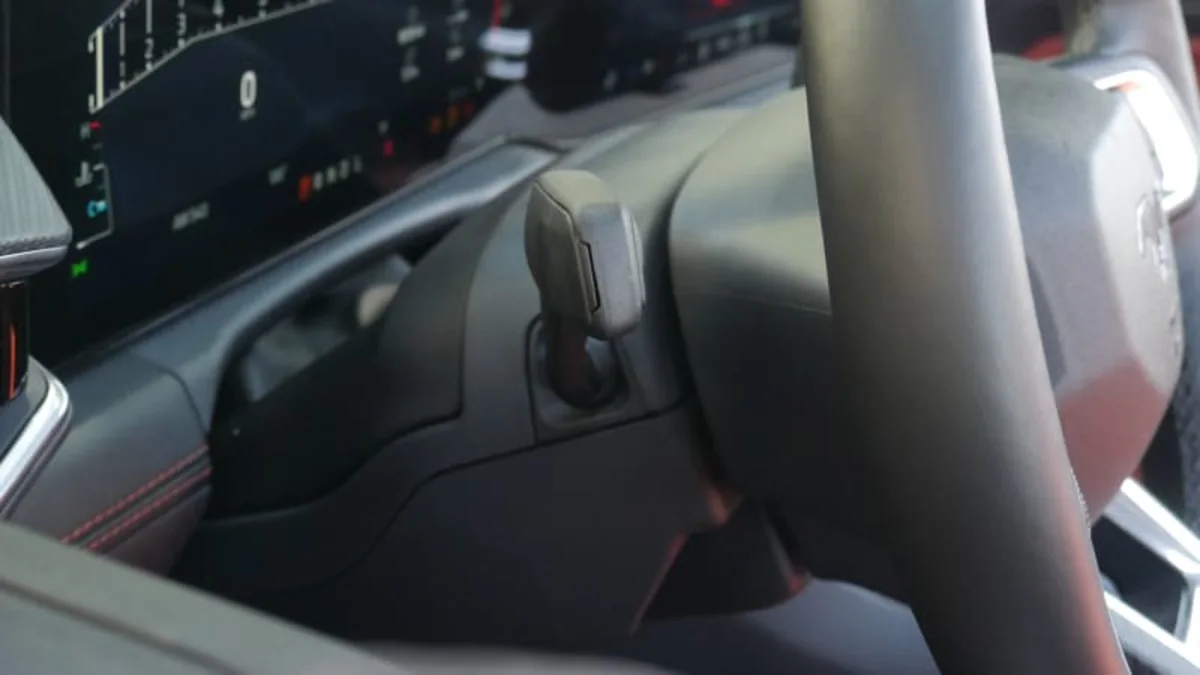
The six-speed manual transmission can no longer be paired with the EcoBoost – the number of people opting for it was too scarce to justify. The 10-speed automatic is therefore obligatory, but unfortunately, none of the drive settings are smart enough to up- and downshift when you would when driving it like a fast and fun Mustang (such as when braking into a corner). Reaching for a paddle shifter is typically a sign that a performance car’s automatic isn’t up to the task, and the Mustang EcoBoost’s is not. Even worse, paddle shifters are not standard – they are included with the Performance pack. We lacked them in the test drive up and down Glendora Mountain Road, and it was frustrating. It is unclear how the 10-speed automatic pairs with the V8-powered GT, as we did not get to properly test that combination.
Ford was also keen to point out the new Mustang’s customization potential, but the custom drive modes do not live up to their billing. For example, we couldn’t pair the Track mode’s most aggressive transmission setting with less aggressive, more road-friendly Sport elements. Worse, you can’t pair a softer MagneRide suspension setting (an option beyond the Performance Pack) with the most aggressive throttle, transmission, steering and stability/traction settings – something routinely done on real roads and occasionally tracks. More suspension compliance is a benefit when meeting mid-corner bumps and undulations.
According to Mustang vehicle integration engineer Rachel Schermaier, the suspension tuning and vehicle dynamics engineers wanted to “curate the experience” for owners and explicitly not allow the degree of mixing and matching of settings other cars offer. There’s very little you can do to alter Sport and Track modes, which makes the six(!) custom presets rather redundant. Schermaier did point out, however, that the Mustang now features Ford’s Power-Up over-the-air software update capability, opening the door for a less curated experience in the future.
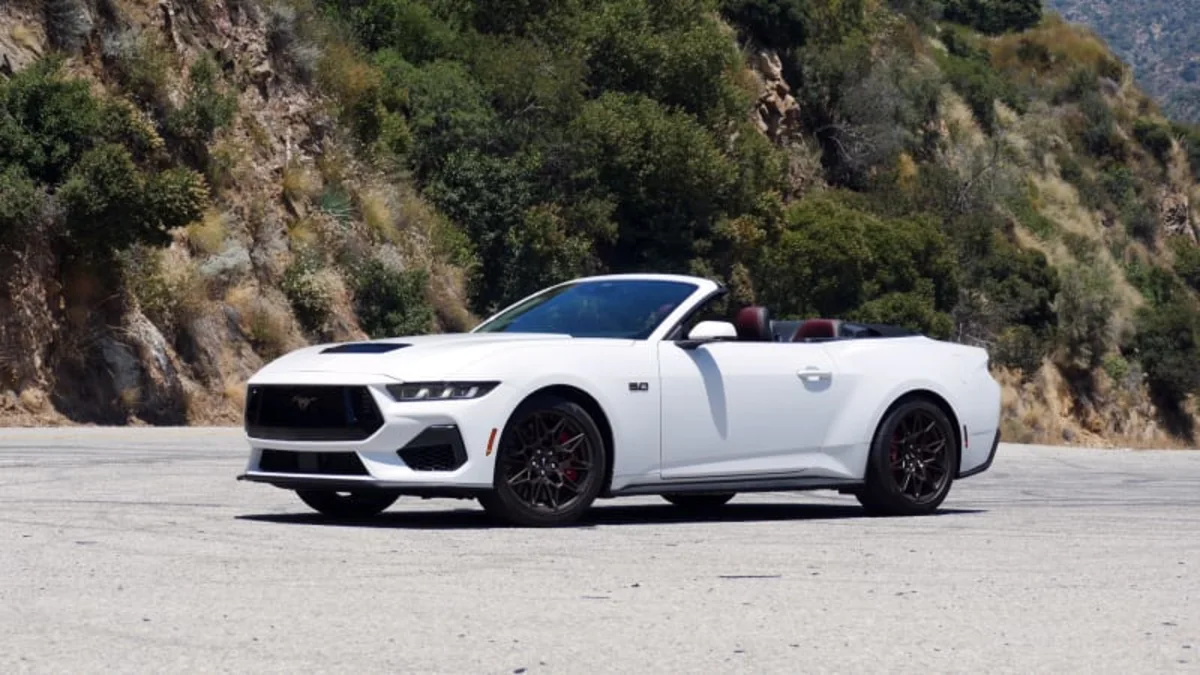
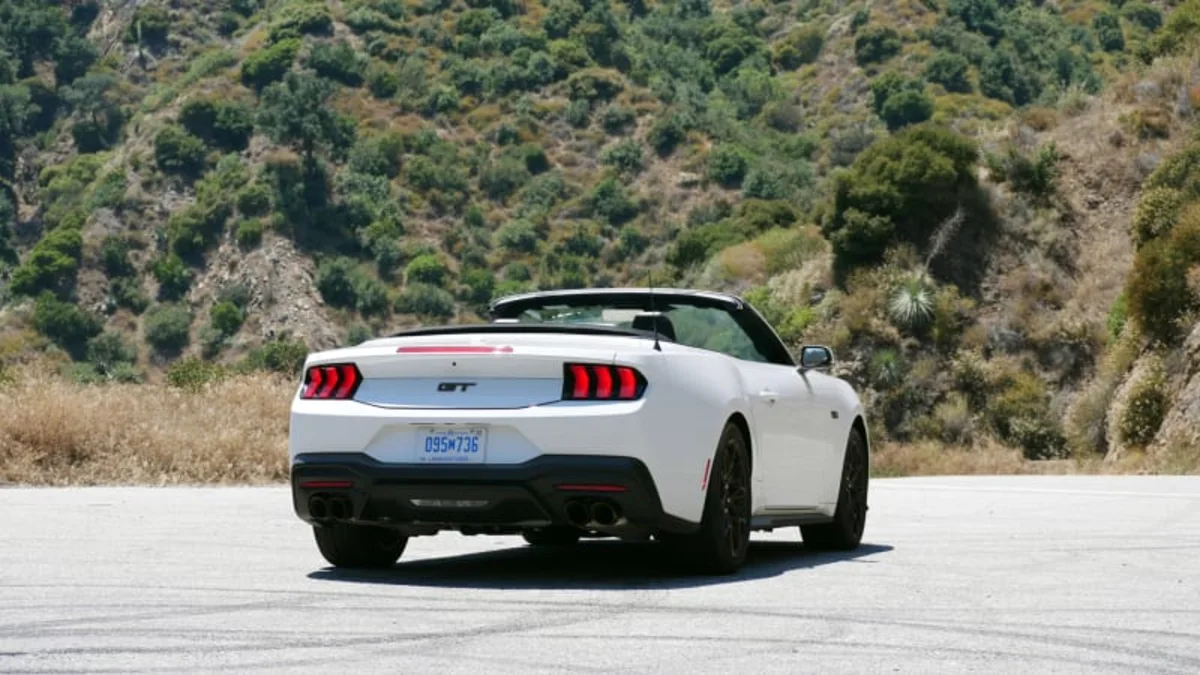
More agreeable is the minimal difference in steering modes – all have the common trait of being sufficiently taut on center, surprisingly light in effort on turn-in (which is fine) and perhaps a tad slow despite the new rack having a 3% quicker ratio. Ford rightly didn’t go all video-gamey here and equate unnecessary weighting with sportiness.
Driven up Glendora Mountain Road northeast of Los Angeles, a Mustang EcoBoost Coupe with the stock suspension managed to capably make its way through the tight, technical corners at a rapid clip without feeling like a hippo out of water. There’s improved composure for 2024, and the fixed suspension’s ride is agreeably on the firm side. Opting for the Performance Pack and its extra-cost MagneRide dampers is less of a necessity now, but being able to further firm up the suspension is definitely an upgrade (even if it sometimes firms up more than you’d prefer). If anything, it would be nice if the magnetic dampers could offer a more comfortable cruising setting in addition to firmer max attack ones. It would definitely be appreciated in the Mustang Convertible, which does not agree with the Performance Pack and MagneRide. Wiggling and jiggling (aka cowl shake) is constant, and although we didn’t get a chance to sample the drop top with the base suspension, it seems very likely that it would be the better choice.
While the exterior is an evolution of the previous model – and much like the 1971, not necessarily for the better – the interior is a radical departure for the Mustang. For the first time in 30 years, a Mustang interior does not feature a retro-inspired, dual-cowl design. There are two giant screens, optionally connected by one piece of glass, that wrap toward the driver in a more cockpit-like design. It’s obviously a departure, but I’m still seeing some Mustang DNA here, just not from where you’d expect: the Mustang II (The crowd gasps).
The gauge cluster, though, can resemble the third-generation Mustang, or the Fox Body as it’s actually known. The 12.4-inch instrument panel display offers six designs: the attractive and functional Normal, the terrible BMW-like “Sport,” the giant bar graph “Track,” the Lincoln-like “Calm” and the “Fox Body” design that mimics the gauges of the 1987-1993 car. Come to think of it, this pairing seems appropriate given my earlier comments about their comparable generational lineage. The Fox Body gauges glow green at night as the originals did and are not further customizable. All the other designs are subject to your style whims thanks to roughly 30 colors that can be applied in two-tone combinations. Along with a separate ambient lighting choice, things can get tacky.
As for the 13.2-inch infotainment touchscreen, it runs off the existing Sync 4 architecture, but features an all-new interface and widescreen orientation. Ford got rid of most physical entertainment and climate controls because replacing them with touchscreen controls was “popular in research with Millenials, Gen-Z and traditional Mustang drivers alike.” Sure it was. Luckily, the climate controls and a bank of menu icons remain docked on the screen, including when using Apple CarPlay. As far as all-screen interiors go, this seems like one of the best. It really does look slick, too.
A wireless charge pad is now available, and a USB port has been added behind the rearview mirror for track cameras “and other devices.”
The rest of the cabin is effectively carried over. The flat, squishy standard seats that annoyingly don’t have power recline; the grippy Recaro options that have even fewer power adjustments. The back seats best suited to backpacks and small dogs. The surprisingly spacious trunk. There do seem to be more soft-touch points throughout, though, especially on the center console, and interior color and materials choices have been expanded for greater customization. One test car’s rich, Carmine Red leather interior looked exceptional.
Any new Mustang is bound to be a very big deal, which this one is, but it’s also ultimately business as usual. If you were expecting Ford’s iconic muscle coupe to transform into, oh I don’t know, an all-electric four-door SUV perfect for the tastes of modern Americans, well, that ship has already set sail and pissed off everyone who still wants their Mustangs to look, drive and sound like this one. They will not be disappointed, and even the high-tech, newfangled interior doesn’t lose sight of heritage. It may not be all new, but that’s also not a bad thing.
Related video:





